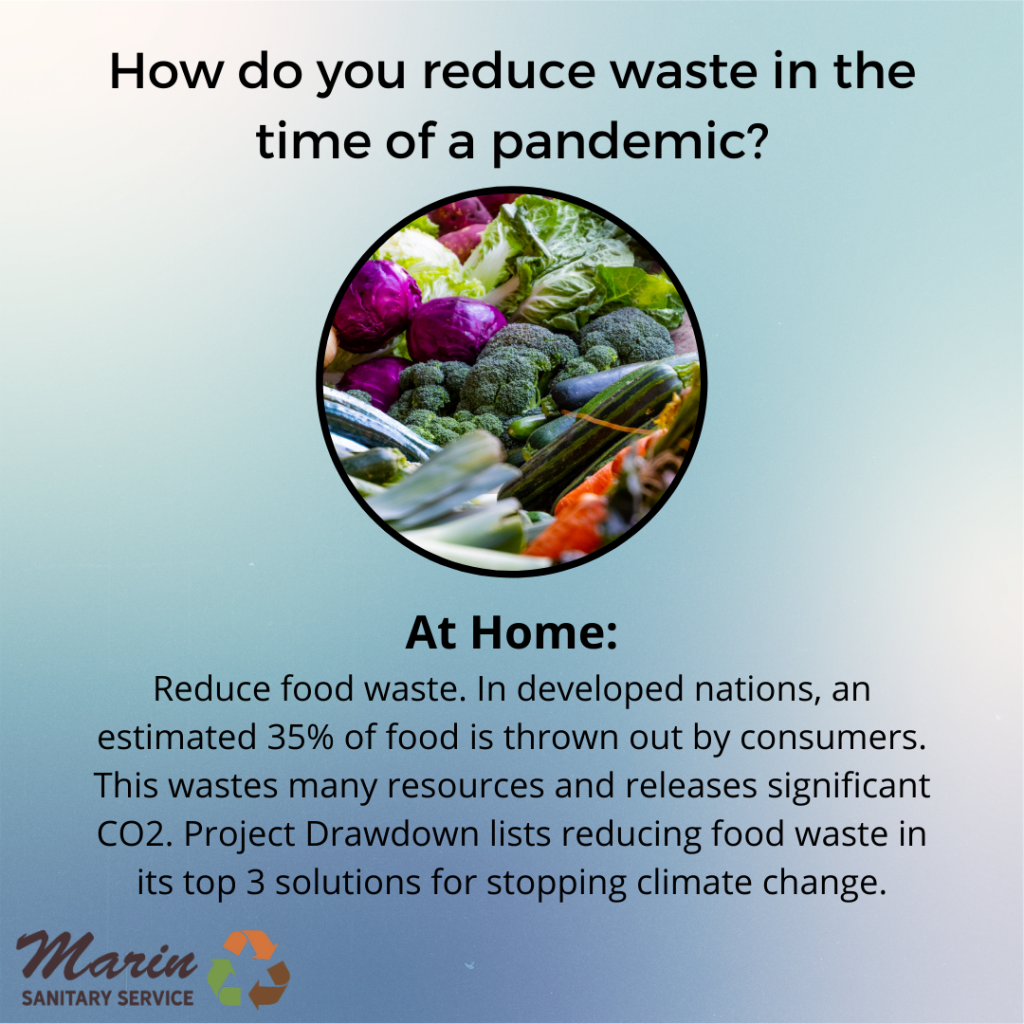
Tips for Reducing Waste During the Pandemic
Overall
Think about how to reduce, reuse, and repair during this time. We are not going to recycle our way out of the plastic pollution crisis, and as we make everyday adjustments this is a good time to enhance our reduce and reuse skills.
At Home
1. Focus on reducing food waste.
According to Project Drawdown, about a third of all the food we produce doesn’t get eaten. In developing countries, this is mostly due to unintentional loss before food reaches the consumer, such as from issues with refrigeration. In developed countries, however, 35% of food is thrown away by consumers. Reducing this waste is a very meaningful way to reduce waste and shrink your footprint.
Try the following:
| – | Audit the food you are throwing away (into the compost!): is it mostly just trimmings or inedible pieces like bones or eggshells? Or are you throwing out produce that sat around too long, or spoiled leftovers? | |
| Use your audit results to inform your grocery shopping habits. Only buy what you know will get eaten. |
2. Avoid packaging by making some space for plants.
If you have backyard space for a vegetable bed or potted plants, that’s great. However, you can start as small as herbs growing in your windowsill. Growing things like herbs, lettuces, or other veggies you would normally find in unrecyclable plastic can help you reduce the waste you are producing.
3. Audit your products.
As you run out of items like shampoo, conditioner, hand soap, or toothpaste, take a look online to see if you can replace it with a zero waste alternative. There are plenty of stores and products that will help you drastically cut down on your plastic waste!
Further Resources and Reading
Reusable Resources for this Moment, Upstream Solutions
7 ways to keep working towards zero waste, Tree Hugger
